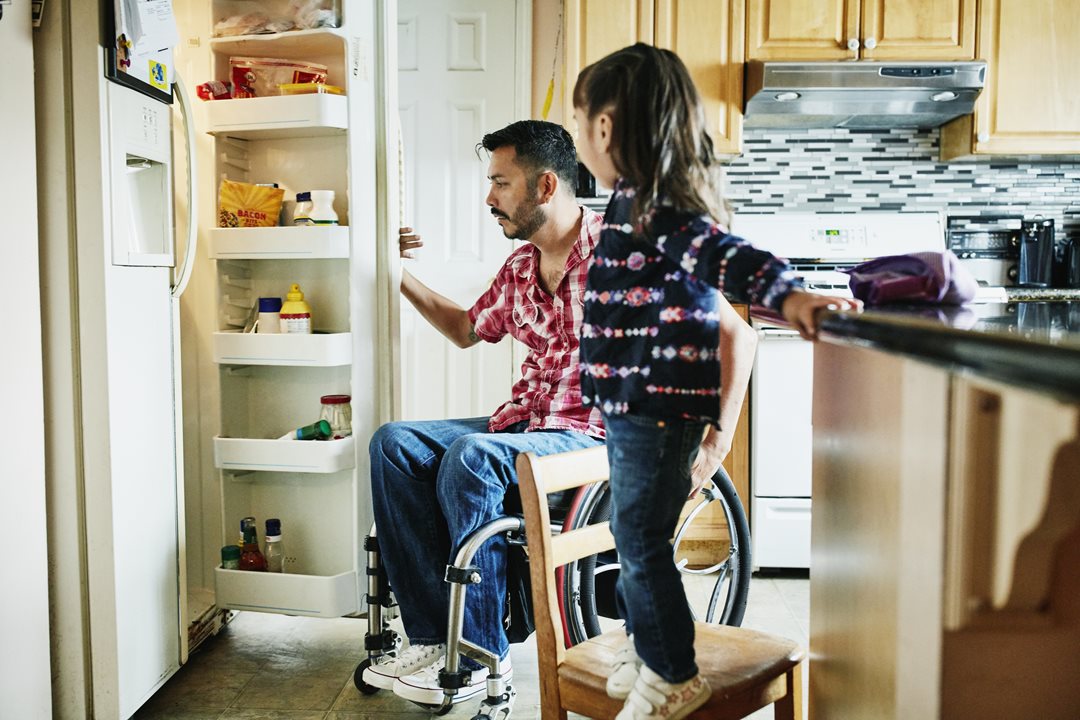Articles
How can I make my refrigerator last longer?
April 26, 2022
by PEMCO Insurance

Most people can expect refrigerators to last about 10 years, according to Consumer Reports, although 40% of refrigerators need repairs or even replacement within the first five years. (To feel better about that relatively short lifespan, check out this study by the American Enterprise Institute. It shows even though you won’t get as many years of out today’s appliances, they’ll take a much smaller wage-adjusted bite out of your paycheck in energy and replacement costs compared to a machine from decades ago.)
Your owner’s manual or manufacturer’s website can offer tips specific to your appliance, but these tips will help most refrigerators last longer:
Set up your refrigerator for efficient, safe operation
- Adjust legs to make your refrigerator level. Confirm with a carpenter’s level, checking side-to-side and back-to-front. A slight tilt can put a strain on door seals, leading to warping and leakage of cold air.
- Move it out from the wall. If your refrigerator has an ice maker, take care not to crimp the line behind it, which can lead to leaks. Also, your refrigerator needs good air circulation to help it displace heat. Try for a minimum of three inches on each side and at least one inch above. Don’t stack anything on the top of your refrigerator, because that can interfere with airflow.
- Set the refrigerator temperature between 37 and 40 degrees Fahrenheit and the freezer at 0 degrees. Any warmer and you risk food spoilage. Colder, and you waste energy and wear out your refrigerator faster because it has to run more often. Invest in a refrigerator thermometer to help you keep the temperature adjusted.
Deep clean to improve efficiency
Check off these tasks at least every six months:- Vacuum the condenser coils located behind the grille at the bottom or in back. Dust, pet hair, grease and lint can get trapped in the coils, making it harder for heat to escape. That strains the motor because it will need to cycle on and off more frequently. Unplug the refrigerator and, if its coils are behind it, gently move it out from the wall, taking care not to overextend the ice maker hose. Vacuum with a brush attachment and use a dry paintbrush to reach areas your vacuum can’t get. While you have it pulled out, clean the floor, too. When you’re finished, don’t push it back so far that it crimps the ice maker line.
- Clean door gaskets. Door seals keep cold air in and warm air out. But spills and bits of stuck-on food allow leaks, causing your refrigerator to work harder. Clean them with warm, sudsy water and wipe dry. You can test the strength of your seal by shutting a sheet of paper in the door. If it’s hard to pull out, you know you have a good seal.
- Clean the drip pan. Refrigerators have a drain hole and drip pan to catch condensation. Check your owner’s manual to find out how to access and clean yours. Dirty drip pans can be a source of mystery odor (mildew, food bits and mineral deposits). Drain holes that are clogged with mineral deposits can cause trapped condensation to pool inside your refrigerator.
- Change the water filter. Many newer refrigerators have an indicator light showing when the filter needs to be changed. For older models, follow recommendations in your owner’s manual (at least every six months). Water pulled through a dirty filter will likely come out less sanitary than it went in!
- Wipe up spills promptly and routinely clean surfaces with soap and water. Follow Centers for Disease Control guidelines for cleaning your refrigerator after it’s been exposed to a recalled food.
Organize for good air circulation and safety
- Don’t overcrowd your refrigerator or freezer. Good air circulation inside helps your refrigerator run efficiently. To prevent uneven cooling, don’t block the vents on the roof and side walls. Also, your appliance won’t work efficiently if it’s practically empty. If nothing else, store containers of water in your refrigerator and ice in your freezer.
- Separate and store foods in their ‘safety zones’:
- Leftovers and prepared foods on high shelves. That reduces the chance that juices from uncooked foods could drip on them. You’ll also be more likely to see and remember to use them up. Discard most leftovers after three days (some food, like soups and stews, can go a little longer).
- Dairy on higher shelves or in drawers. Temperatures fluctuate too much in the door.
- Eggs in the original carton on a shelf. Like dairy, they’ll keep better if they’re not stored in the door.
- Vegetables and fruits in crisper drawers. Not only will they be stored at the proper humidity, but they’ll be protected from contamination by leaks from uncooked foods.
- Raw meats in the meat keeper or on the lowest shelf. That keeps them at the coldest temperatures and prevents juices from leaking onto and contaminating other food.
- Condiments and sodas in the door. They’re the least perishable items in your refrigerator and can withstand the warmer temperatures of the door.
Consider home warranty protection
If you’re worried that your appliances will some day leave you on the hook for a big repair bill, consider home warranty coverage. PEMCO has partnered with Cinch to help homeowners worry less and live more. It takes just minutes to get a quote online, and as a PEMCO member, you’ll get the first month of your Cinch plan free.Share on social media